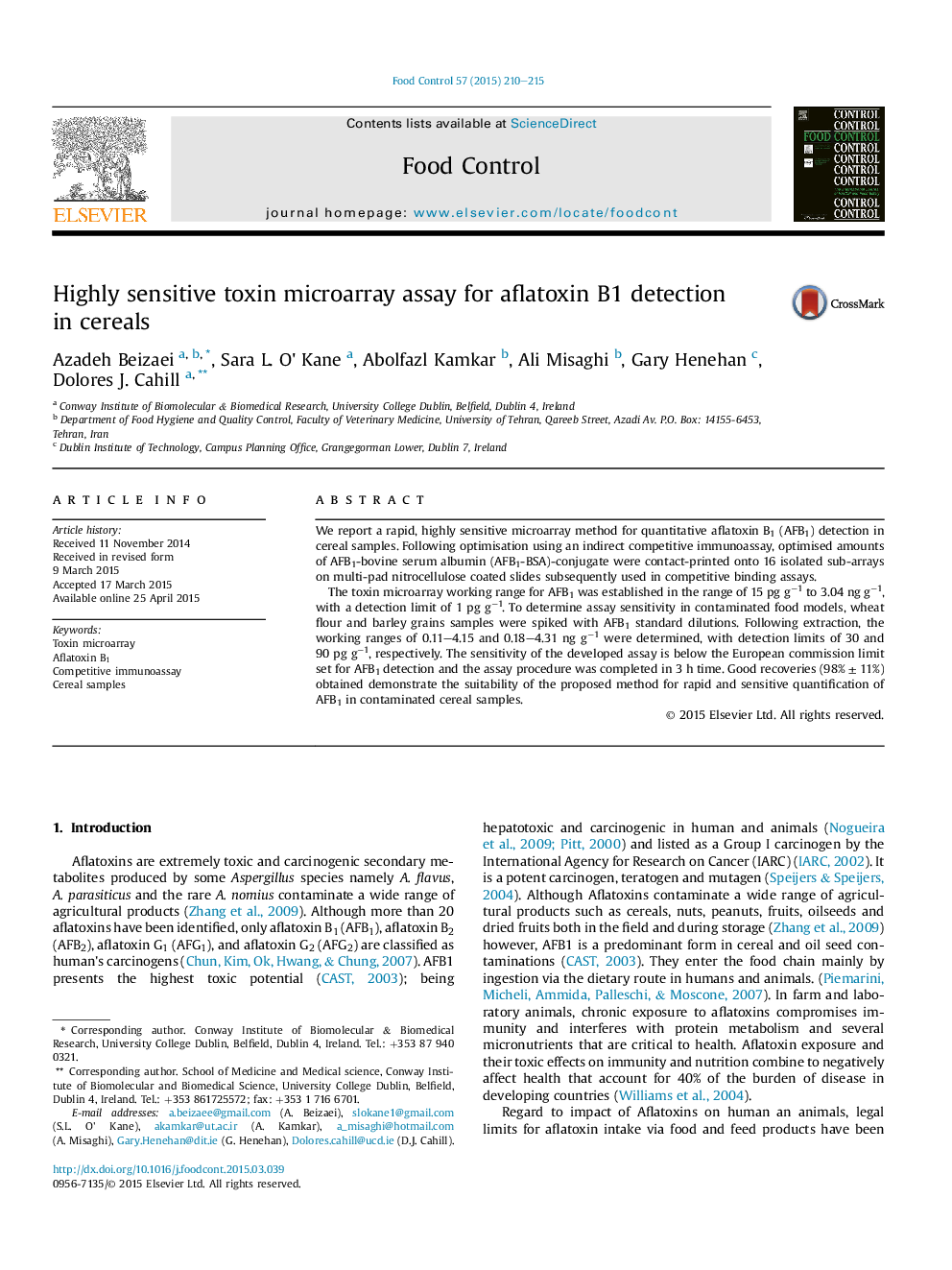| Article ID | Journal | Published Year | Pages | File Type |
|---|---|---|---|---|
| 6390721 | Food Control | 2015 | 6 Pages |
â¢A toxin microarray developed for rapid and highly sensitive detection of AFB1.â¢The toxin microarray successfully detected AFB1 wit detection limit of 1 pg gâ1.â¢Detection limits were 30 and 90 pg gâ1 in spiked wheat and barley samples, respectively.â¢Toxin assay procedure completed in 3 h time.
We report a rapid, highly sensitive microarray method for quantitative aflatoxin B1 (AFB1) detection in cereal samples. Following optimisation using an indirect competitive immunoassay, optimised amounts of AFB1-bovine serum albumin (AFB1-BSA)-conjugate were contact-printed onto 16 isolated sub-arrays on multi-pad nitrocellulose coated slides subsequently used in competitive binding assays.The toxin microarray working range for AFB1 was established in the range of 15 pg gâ1 to 3.04 ng gâ1, with a detection limit of 1 pg gâ1. To determine assay sensitivity in contaminated food models, wheat flour and barley grains samples were spiked with AFB1 standard dilutions. Following extraction, the working ranges of 0.11-4.15 and 0.18-4.31 ng gâ1 were determined, with detection limits of 30 and 90 pg gâ1, respectively. The sensitivity of the developed assay is below the European commission limit set for AFB1 detection and the assay procedure was completed in 3 h time. Good recoveries (98% ± 11%) obtained demonstrate the suitability of the proposed method for rapid and sensitive quantification of AFB1 in contaminated cereal samples.
